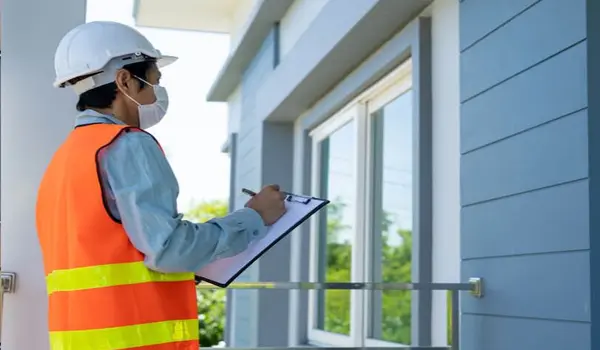Your Go-to Checklist for a Comprehensive Balcony Inspection

What does your balcony look like? Can you get out on it in a lovely morning and breathe in the fresh air without feeling a cracking or squeaky sensation under your feet? If not, maybe it’s time to have your balcony inspected, and this balcony inspection checklist is what your balcony needs to get as good as new.
Why Regular Balcony Inspections Are Crucial
The significance of inspecting the balcony lies in the resident’s safety. A poorly maintained balcony is especially dangerous since it can lead to falls and severe injuries. However, aside from safety issues, inspecting and maintaining the balcony illuminates the looks of your house, and with a bit of decoration or planting, the balcony will make your home’s exterior shine.
Regular balcony inspections also reveal your balcony’s condition and notify you of potential defects, such as loose wood or faulty guidelines, while it’s still easy and affordable to repair. Ultimately, these regular inspections keep the balcony in good shape, extend its lifespan, and prevent your home from devaluation.
Who Should Perform Balcony Inspections?

Inspecting the balcony isn’t something you can’t do yourself, but some details might escape the untrained eye. So, if a thorough and comprehensive balcony inspection is what you’re after, it’s better to use home inspection services in Toronto.
Moreover, the inspector’s insights and recommendations can help you save money by avoiding unnecessary repairs. They can also give you budgeted solutions to solve potential problems. Of course, these suggestions can be about any part of the house, depending on the scope of the exterior home inspection.
Are you thinking about buying a condo? Don’t hesitate to have it inspected to make a well-informed decision about your purchase. Click on “Condo inspection” to learn more.
When to Get a Balcony Inspection?
Normally, it’s wise to inspect the balcony once a year, but the timing is not set in stone. Depending on the age of the house and the materials used, the inspection time can vary. That is, older houses with wooden balconies might need more than a yearly house inspection. On the other hand, if the house is new, you can have the balcony inspected after three or more years.
Furthermore, if your house is located in a region with harsh weather conditions, you might want to inspect the balcony more frequently. So, if there’s a storm or heavy rain, it’s better to examine the balcony afterwards, even if you checked it recently.
Types of Platforms Support

There are different types of balconies, and inspecting each has its own peculiarities. In other words, condo balconies inspection depends on their structure and design. The following are some of the common types of balconies.
- Cantilevered balconies: These balconies are supported by beams that extend out from the house. These beams are inspected for stress, cracks, or water damage. Condo balconies are
- Pillar balconies: As the name suggests, these balconies are secured on top of vertical pillars extending from the ground. Here, the stability of the pillars is important, and the inspector looks for signs of corrosion or settling.
- Hung balconies: These balconies are usually small and supported by stainless steel cables or rods anchored to the house. The inspector checks the supports to ensure they’re not corroded.
- Bracket-supported balconies: the brackets or corbels are placed under the balcony's two ends and attached to the building. The brackets are checked to ensure they are firmly fastened.
- Prefabricated concrete balconies: These balconies are made from precast concrete. This type of balcony is very durable and relatively low maintenance. Inspectors check these balconies for cracks or signs of water infiltration that can weaken the structure.
Step-by-Step Balcony Inspection Checklist
Regardless of the type of balcony, the following key components are checked in a balcony inspection.
1. Structural Integrity
Structural integrity is checked to see whether the balcony can support its weight and that of people or things on it without failure. To that end, the inspector examines the foundation elements and carefully checks the balcony for signs of weakness in supports, beams, and connections to the house.
2. Flooring and Surface Condition
The importance of this item on the checklist is twofold. First, because the surface can cause tripping hazards and second, because it affects the appearance of your balcony. Depending on the materials used, the inspection can be different. For example, in wooden flooring, the inspector looks for signs of wear and tear or corrosion. The slope and the drainage system must also be in optimal condition and free of debris.
3. Weather-Related Damage
The damage caused by various weather conditions builds up over the years and can weaken the structure. This can be due to heavy rain or snow, humidity, severe winds and storms. You can maintain your balcony’s resilience by proper and timely waterproofing and other protective measures.
4. Safety Equipment and Compliance
Safety equipment is just as necessary as the structural integrity of the balcony. Safety equipment inspection includes railings and guardrails, lighting, fasteners, and waterproofing. Railings must be secure and tall enough to prevent falls. If the balcony is supported by brackets and fasteners, they must be checked for looseness. The inspector also checks whether the balcony is properly sealed to prevent moisture or rainwater from entering the house.
5. Potential Hazards
The hazards of a balcony vary based on the types mentioned above. Wooden balconies require the highest maintenance, and if not inspected regularly, they can cause hazards caused by instability and lose structure. Probably the most drastic balcony-related hazard is the collapse of the structure, which can result in loss of life and property damage. Tripping and falling can also be caused by slippery floors and nonstandard guardrails.
Balcony Inspection Report
When a home inspector inspects your house, they issue a report that gives you an overview of the condition of your balcony. The report also gives detailed information about the balcony's structural integrity, flooring, and other components. But that’s not all. The inspector also mentions the necessary repairs you must do immediately to avoid incidents and safety hazards. A balcony inspection report contains information about:
- Inspection date and time
- Inspector’s information
- How the inspector performed
- Defects
- Recommendations
- Estimated repair time
- Lifespan
- Pictures
- The inspector’s stamp
Conclusion
The balcony plays a major role in the beauty of your house, and it’s a great place to let off some steam. However, thanks to its structure and the potential hazards, you should inspect it regularly to steer clear of drastic accidents. By checking the structural integrity, flooring and safety equipment, you can get the most out of your balcony for a long time.
- In this post:
- Why Regular Balcony Inspections Are Crucial
- Who Should Perform Balcony Inspections?
- When to Get a Balcony Inspection?
- Types of Platforms Support
- Step-by-Step Balcony Inspection Checklist
- Balcony Inspection Report
- Conclusion




